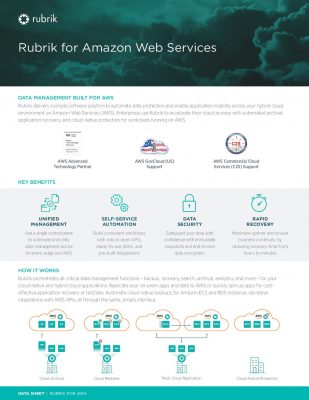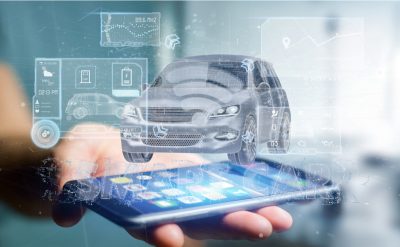Mobile Devices are getting smarter, faster and essential enterprise commodity. The increased demand for the mobility solution is to promote the employee work environment, flexibility for better user experience and also an adaptation of modern day application requirements. With all developments looking to provide better mobility solutions to remove different bottlenecks on every user experience feature of development. The year 2018 was great for the mobility solutions and many upcoming technologies were inducted in the Enterprise Mobility Management (EMM), but 2019 will be offering new trends.
1. Artificial Intelligence Powering the Mobile Technology
AI and virtual assistants aren’t new for the mobile technology world but in 2019 we will be seeing them powering the complete device without using any of the physical interactions. Integration of AI in the Chabot’s will become a common solution curbing the cost of customer service; however, the Chabot’s will be able to solve complex user problems without human interference. The device makers will also induct the AI technology directly in the device such as chip makers like Qualcomm and Huawei already come in with AI capabilities. Virtual Assistant will become part of daily activities with the detection of unusual behavior and the user can be verified using the virtual assistant. AI will help in improving the security with basic user persona be matching the model, then the device can be accessed by the user. As enterprises are adopting the mobility devices at a rapid pace for them the imperative solution will be the security that can protect the network. To implement the AI strategy, enterprises should be aware of the current business trends in Artificial Intelligence that can solve the different challenges faced in security and network department.
2. Development of Enterprise Mobility Management (EMM)
The focus towards the EMM will change with enterprises now looking towards shifting the focus from mobile device management (MDM) and Enterprise Mobility Management (EMM) to Unified Endpoint Management (UEM). The UEM will assist in incorporating a variety of devices, desktops, wearable devices, and IoT devices. Many of the UEM tools will including all the features from the IT management perspective including identity and access management. The EMM and MDM providers are refocusing on mobile technology to deal with different technology trends. The adoption of the Unified Enterprise Management (EMM) will help the enterprise increase the capabilities of access management. In 2016, blackberry had rebranded the EMM suite to the UEM platform and also Citrix has changed the name of XenMobile to Citrix Endpoint Management. In 2018, Gartner rolled out its first Magic Quadrant dedicated to the UEM.
3. Development of Mobility Technology
UEM developers also has to adapt to the growing technology trends that might affect the end of product development. Cross-platform development of mobile technology is becoming a more viable option as we have adopted the frameworks such as React Native and Native script combined with technologies such as Progressive Web Apps (PWAs). PWAs combine the best applicability of the web apps and the native apps; it’s also gaining a lot of popularity among the mobile developers. PWAs is considered as the growing standard tool to develop mobile apps. As the development of mobile technology shift from device defined to technology defined it imperative that the enterprises understand the usage of innovative technology will disrupt the growth. PWA will assist the enterprises to make an easy transition from native apps to the PWA. The PWA offers an easy solution to develop them and for the developers, it will be more easy to create with same native technology difference.
4. Security and Technology
Cybersecurity experts are rallying behind the machine learning software for mobile devices that can proactively protect the devices against any kind of threats and human errors. Mobile devices consist of various applications and features that they add into the threat zone as they can be exploited as needed by the criminals. A criminal can use various methods to gain access to the data even a compromised Wi-Fi network that the user has logged in can be used as a gateway to gain access to the device. Many enterprises and government organizations that provide mobility solutions to the enterprises have felt the need for a layer of protection around the device that can stop the attacks. Protection against persistent threats and zero-day attacks require on-device machine learning technology that can look for anomalies can prevent them from accessing the sensitive data. The machine learning should be able to detect any unusual behavior and then notify the user about it. The major challenge for machine learning technology is that they don’t usually cover the network of the entire device and just certain entry points. Most of the phishing or malware attacks are hidden within a range of media files and apps that can gain access to sensitive information.
JT Keating, Vice President of Product Strategy at Zimperium added that “The point of implementing machine learning is that it will be able to detect things that no other common anti-virus can do. ML will be one step closer to the customers because it will make them the admin of their device.” Most of the devices that are currently being operated are usually one or two versions behind in terms of the operating system. This gives the cybercriminals an option to use the device to exploit the different enterprise entry points. Machine learning can act as a perfect barrier to deal with several of such entry points that can be protected. Any machine learning model needs huge data sites that can be used to understand user behavior or develop a model to help detect threats. A machine learning model has to learn whether the given function performed on the device is normal, new or malicious. Using the cloud technology combined with ML, implemented on devices can lead to a better threat detection model because the enterprise can keep updating the Machine learning model to detect the threats.
To know more about mobility technology, you can download our whitepapers.





























































